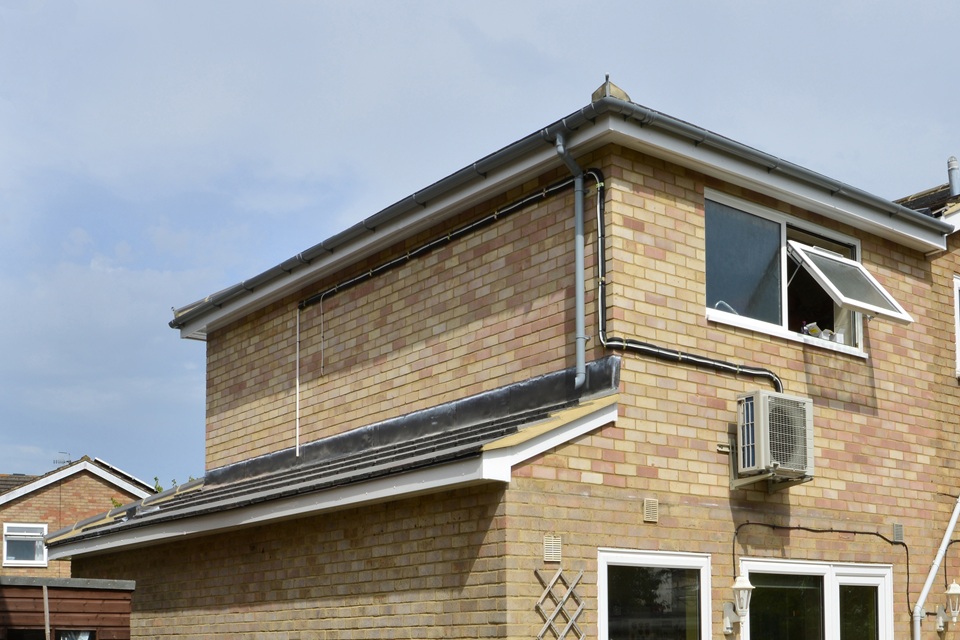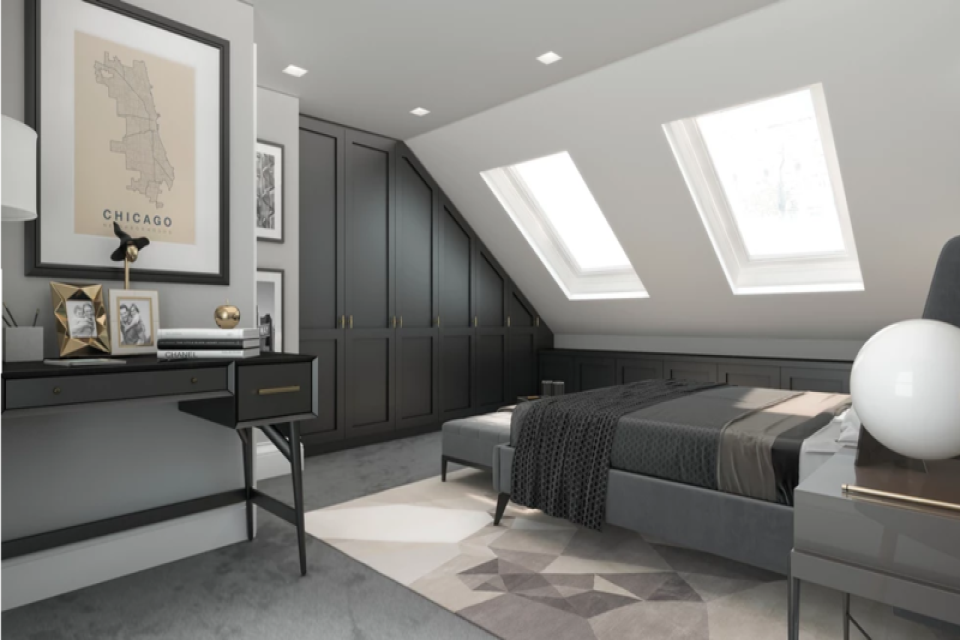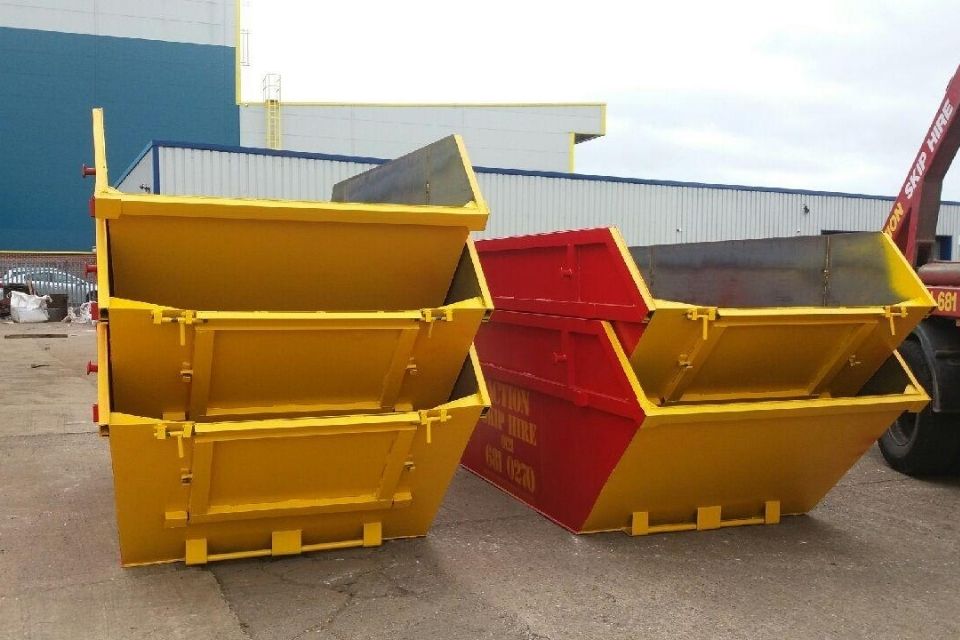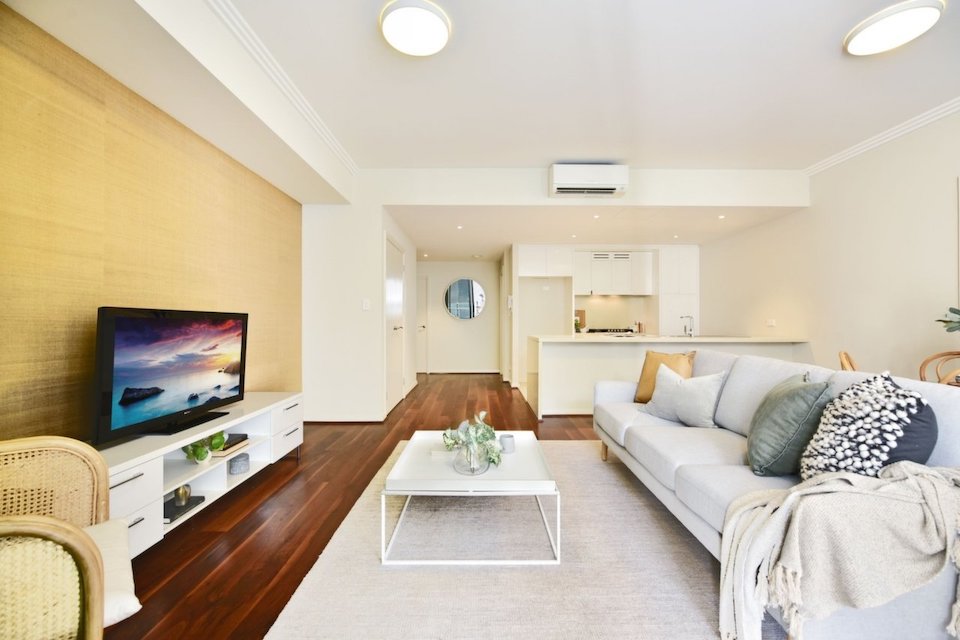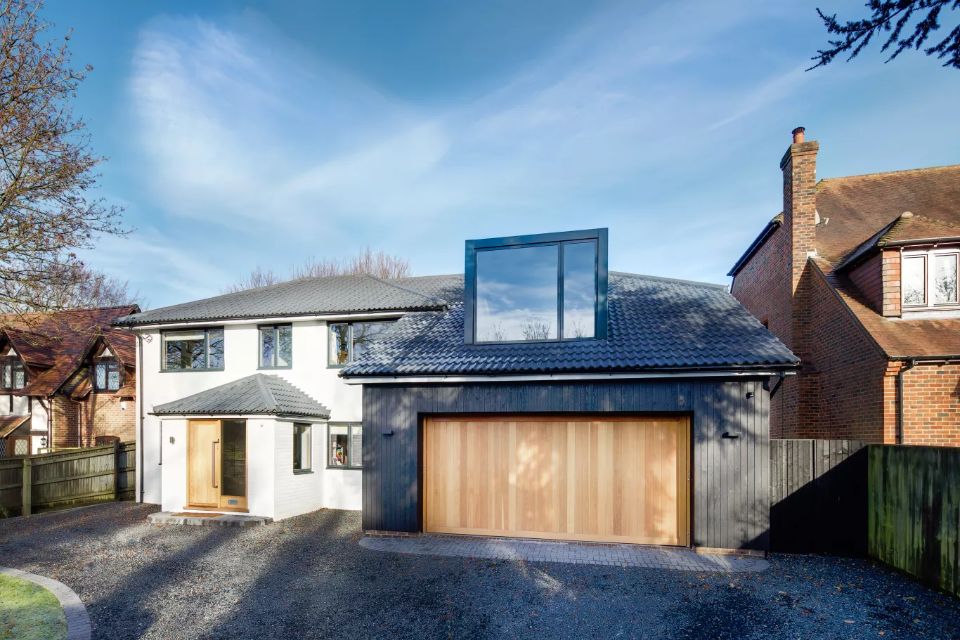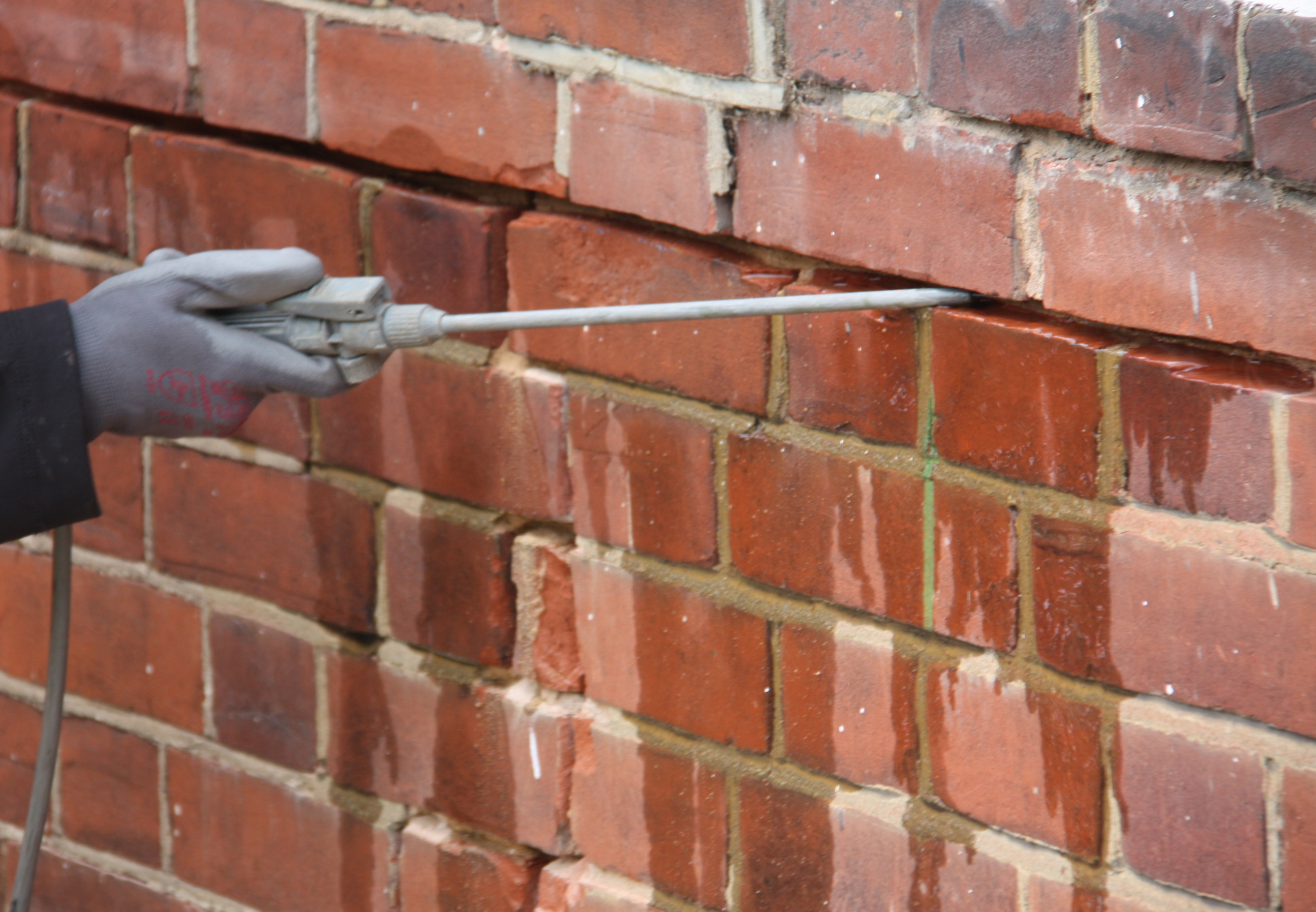How Much Does a Side Return Extension Cost?
A side return extension is one that’s been built by using the passageway alongside your property, and it’s common in Edwardian and Victorian terraced houses and semi-detached properties.
It’s an ideal way to create more room without losing garden space, and it makes use of an area that is often underused.
The average side return extension costs between £13,800 and £68,400.
The price range is varied because the cost depends on the size and quality of the finish you choose.
A single-storey side return extension is often only between 6m2 and 18m2 because it utilises the space alongside a property, so there is often just a long, narrow gap.
An extension with a basic finish would cost on average between £13,800 and £50,400. But if you wanted an average finish, then you would be looking at costs of between £16,800 and £59,400. A high-quality finish, on the other hand, can cost between £19,800 and £68,400.
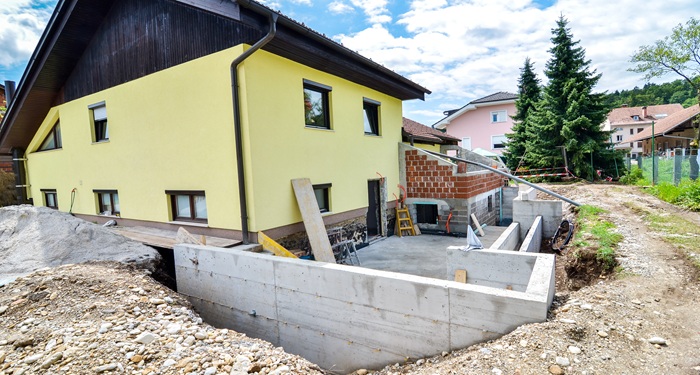
The Cost of a Two-Storey Side Return Extension
It doesn’t cost much more to build two floors, and it means you’ll get extra space on the ground floor and upstairs. The savings in costs are due to the fact that the foundations and roofing costs are already covered by the ground floor build.
The cost of a two-storey extension ranges from £14,400 to £54,000 for a basic finish. Between £14,400 and £61,200 for an average finish and between £20,400 and £72,000 for a high-quality finish.
Read on to find out more details about prices according to size and finish, and some of the other things you might need to add to your budget.
- How Much Does a Side Return Extension Cost?
- Side Return Extension Prices
- Cost of Side Extension in London and the South East
- What are the Supply Costs for a Side Return Extension?
- First Fix – Electrics and Plumbing
- Second Fix Electrics and Plumbing
- What are the Additional Costs of a Side Return Extension?
- How Long Does It Take To Build a Side Return Extension?
- Types of Side Return Extensions
- Cost of Side Return Extension for Victorian Terraces
- Roof Type and Cost Impact
- How Much Does It Cost to Remove a Side Return Extension?
- FAQs
Side Return Extension Prices
Just how much does a side return extension cost in the UK?
Side Return Extension prices vary according to size and the quality of the finish. Other factors that influence the total cost of the build include architects’ fees and party wall agreements, if necessary.
The building cost of a side return extension is typically provided per square metre. The average cost per square metre for a single-storey extension is between £1,200 and £2,100 per square metre.
The table below sets out the single-storey side return extension costs for various sizes with basic, average and high-quality fittings. As you can see, there are a number of uses for even the smallest space.
You can create a home office or dining room with a small extension, or an open-plan living space if you have more room. Typically, side extensions are used to extend narrow kitchens, which are often a feature of Victorian and Edwardian terraced houses.
Single Storey Side Extension Cost
| Size | Possible Use | Basic Finish | Average Finish | High-Quality Finish |
|---|---|---|---|---|
| 6m2 | Dining Area/Home Office | £7,200 - £8,400 | £9,000 - £10,800 | £10,200 - £12,600 |
| 9m2 | Kitchen Extension | £10,800 - £12,600 | £13,500 - £16,200 | £15,300 - £18,900 |
| 12m2 | Kitchen/Diner | £14,400 - £16,800 | £18,000 - £21,600 | £20,400 - £25,200 |
| 18m2 | Open Plan Living Space | £21,600 - £25,200 | £27,000 - £32,400 | £30,600 - £37,800 |
Two-Storey Side Return Extension Cost
Building a two-storey extension will increase your living space on both floors of your property and allow you to create a new bathroom, home office, guest bedroom, teenager’s den or walk-in wardrobe.
The average cost for a two-storey side return extension is between £8,850 and £49,500, depending on the size and the quality of the finish. Other factors will also influence the build price, such as ease of access and groundwork costs, which could increase the cost of labour.
| Size | Possible Use | Basic Finish | Average Finish | High-Quality Finish |
|---|---|---|---|---|
| 6m2 | Home Office/Walk-In Wardrobe | £8,850 - £11,250 | £10,590 - £13,350 | £11,850 - £16,500 |
| 9m2 | New Bathroom | £13,275 - £16,875 | £15,885 - £20,025 | £17,775 - £24,750 |
| 12m2 | Teenager’s Den | £17,700 - £22,500 | £21,180 - £26,700 | £23,700 - £33,000 |
| 18m2 | Guest Bedroom with En-Suite | £26,550 - £33,750 | £31,770 - £40,050 | £35,550 - £49,500 |
Cost of Side Extension in London and the South East
Side extension costs for both single and two-storey side return extensions are based on locations outside London and the South East of England. If you live in and around London or in the South East, then you’ll need to add between 20% and 25% to the costs in the tables.
Costs Per Square Metre for a Side Return Extension
When you get quotes from building companies for an extension, it is likely to be priced per square metre. This is a common method of estimating the cost of a building project and is an easier way to compare quotes and manage your budget.
However, you must communicate with your builder about the type of finish you want to install, as this affects the overall price.
Here's a table showing the cost per square metre of a single-storey side extension inside and outside London:
| Finish | Location | Price Per m2 |
|---|---|---|
| Basic | UK Outside London | £1,200 - £1,400 |
| Average | UK Outside London | £1,500 - £1,800 |
| High-Quality | UK Outside London | £1,700 - £2,100 |
| Finish | Location | Price Per m2 |
|---|---|---|
| Basic | London and South East | £1,440 - £1,750 |
| Average | London and South East | £1,800 - £2,250 |
| High-Quality | London and South East | £2,040 - £2,625 |
Cost per square metre of a two-storey side return extension inside and outside London:
| Finish | Location | Price Per m2 |
|---|---|---|
| Basic | UK Outside London | £1,475 - £1,875 |
| Average | UK Outside London | £1,765 - £2,225 |
| High-Quality | UK Outside London | £1,975 - £2,750 |
| Finish | Location | Price Per m2 |
|---|---|---|
| Basic | London and South East | £1,770 - £2,343 |
| Average | London and South East | £2,118 - £2,781 |
| High-Quality | London and South East | £2,370 - £3,437 |
The cost to build a side return extension is between 20% and 25% more expensive in London and the South East than in other parts of the UK.
For example, a two-storey extension of 18m2 for a guest bedroom and en-suite bathroom, with an average finish, will cost between £31,770 - £40,050 outside London and between £38,124 and £50,062 in London and the South East of England.
What are the Supply Costs for a Side Return Extension?
If you are supplying the materials for your side return extension, then having an idea of what the costs are for materials will help you manage your budget.
Foundations
The work will start with laying the foundations, which means you’ll need a concrete base. The average cost of laying a concrete base is between £300 and £600. The price depends on whether you use pouring concrete or slabs and the size of the base.
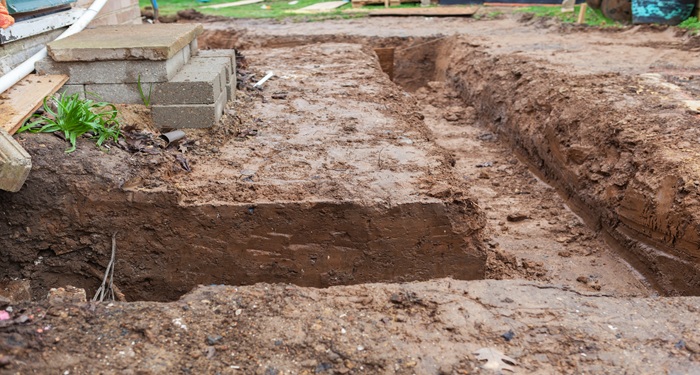
For example, foundations for an area of 12m2 will cost between £300 and £350 plus labour charges of between £40 and £50 per m2, which would be between £480 and £600, bringing the total cost for 12m2 to between £780 and £1,050.
Walls
The next step is to build the walls, which are commonly built with brick and block. The wall cavity is then filled with insulation and a damp-proof course fitted within the walls that are 150mm above ground level.
The cost for blocks is around £2 per block, and they are usually sold in sets of 54 at around £100. This means for an 18m2 side return extension, you will need approximately 405 blocks, which is a total cost of around £800.
Windows and Door Apertures
Window and door apertures are created, and steel or reinforced concrete lintels are inserted above the door and window openings. Bi-fold doors are a popular choice.
The average cost of bi-fold doors ranges between £2,000 and £7,500, depending on the size and whether you have timber, aluminium or uPVC.

Windows prices will also depend on whether you choose timber, aluminium, composite, or uPVC.
Costs range from £250 for a small window up to £3,000 for a larger size. Windows installed in the roof cost between £100 and £1,000.
The Roof
Once the walls are in place, the roof can be constructed. Single-storey side extensions can have a flat or a pitched roof. Two-storey extensions often have a pitched roof.
A single-storey extension with a flat roof will often include the installation of a roof lantern to bring in natural light. The cost of roofing can range between £50 and £600, depending on the type of roof you have and the materials you use.
Floors
Once your concrete floors have been completed, you can then choose the flooring for your new extension. Popular materials are laminate, hardwood, engineered wood, carpet, parquet or tiles.
Prices range from £80 to £150 per m2, plus labour at between £100 and £700 for between half a day and 4 days' work.
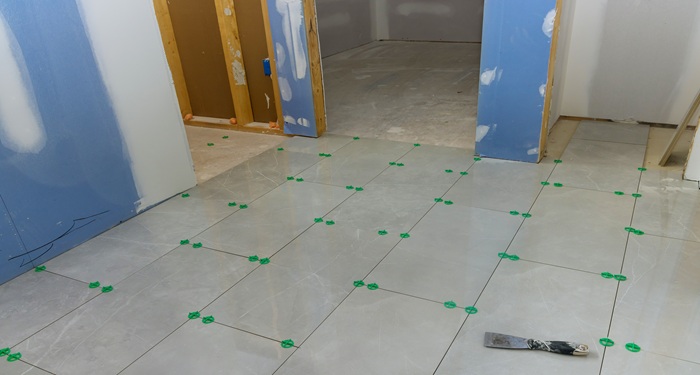
Installation of Doors and Windows
Door and window frames are fitted, and then the glazing is installed. Most side return extensions feature French or Bi-Fold doors and double or triple-glazed windows.
First Fix – Electrics and Plumbing
Once the structure is weatherproof, the electrician can install cables, pipework, and position light switches and sockets.
A plumber will install pipework for a water supply to a new kitchen or for sanitary ware in a bathroom.
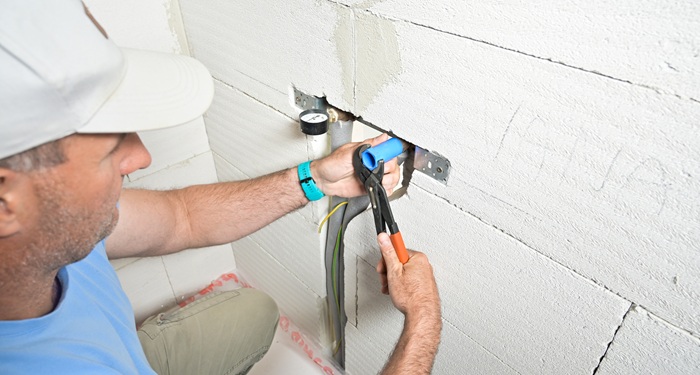
Plastering
When all cables and pipes are installed, plasterboard can be put in place, and a plasterer will make sure the walls are smooth and ready to be painted or wallpapered.
Second Fix Electrics and Plumbing
The second fix comprises the fitting of lights, sockets and switches and installing any other electrical appliances. A plumber will fit a bathroom suite or a sink, washing machine or dishwasher into the kitchen.

Heating
To heat your new extension, you can either have traditional radiators, use electric radiators or install underfloor heating.
Average costs are between £60 and £150 for a traditional radiator. Between £150 and £300 for an electric radiator or between £100 and £150 per m2 for underfloor heating.
Carpentry
Carpentry can involve fitting kitchen units, skirting boards, architraves, laying a floor or hanging doors. The costs will depend on the type of work you have done. Typical costs for a carpenter are between £125 and £175 per day.
Decorating
Painting ceilings and woodwork, and painting or wallpapering walls, tiling walls or floors. The costs for a painter and decorator are usually between £128 and £160 a day. A tiler will typically charge between £128 and £200.
What are the Additional Costs of a Side Return Extension?
An additional cost you may need to consider is service fees, which could include:
Architect Fees – An architect may charge between 3% and 7% of the construction costs. For example, if you want to build a side extension that’s going to cost around £26,700 then your architect’s fees will be between £801 and £1,869.
Structural Engineer Fees – A structural engineer will check the safety of your extension and ensure that the building complies with building regulations. They can also advise you about removing load-bearing walls and installing steel beams.
A structural engineer can cost between £90 and £200 an hour.
Party Wall Agreements – You may need a party wall agreement if you share a wall with a neighbour, and it will be included in the building works. You will need to hire a party wall surveyor to create an agreement.
A party wall surveyor charges on average between £90 and £450 an hour. A straightforward agreement for a side return extension might typically cost around £1,000.
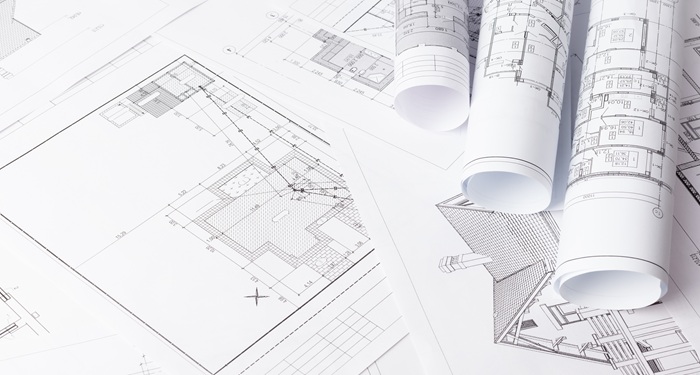
Planning Permission
If you are building a single-storey side return extension, then this is covered under permitted development, and you won’t need planning permission unless you live in a listed building or in a conservation area.
If you want to build a two-storey side return extension, you will need planning permission unless you own a detached house which was built after 1948.
The cost of a planning application in 2025 is £258. If you intend to sell your house in the future, then you may want to apply for a Certificate of Lawful Development, which demonstrates that your extension is legal. This certificate costs £103.
Building Regulations and Inspections
Even if you don’t need planning permission, your extension will still have to comply with building regulations.
- Foundations, walls and roof construction must be structurally sound
- Fire resistance regulations must be followed
- Thermal insulation standards must be met
- Adequate drainage has to be supplied
- All electrical work must be carried out by a qualified electrician, and a Part P certificate issued to confirm the work complies with building regulations.
You can apply for building regulations approval in one of two ways. The quickest way is to apply for a Building Notice. This is a written application for the proposed work, and it doesn’t require you to submit any plans or calculations. Once you have submitted the Building Notice, you can start work 48 hours later.
During the build, the local authority will carry out regular inspections and a final inspection once the work is completed. When the authorities are satisfied, they will issue a completion certificate.
The second way to apply is to make a Full Plans Application. You will need to submit calculations and the architect’s plans. The application will be reviewed to make sure it complies with building regulations.
Then you will be given either a conditional approval, which means you may have to make modifications to your proposal or full approval, which means you can go ahead.
Once the building work is completed, the local authority will conduct a final inspection. Although a Full Plans Application can take several weeks, it does reduce the risk of any surprise issues or additional costs once the work is underway.
Building regulation costs vary depending on your local authority. You can usually get a quote or view charges online. If not, then visit your local council planning department or contact them by telephone.
Other Costs You May Incur
If you are having a two-storey side return extension built, then you may need scaffold hire.
If it is not included in the builder’s quote, then you should expect to pay between £200 and £550 a week.
Then, of course, there is the cost of fitting out your new side return extension, the cost of which depends on the type of fittings you choose to install.
For example, fitting out a new bathroom will cost between £1,500 and £15,000, depending on the quality of the fittings.
You might also decide to install a roof lantern on the flat roof of your extension to make the most of the natural light. The average cost to install a roof lantern is between £2,000 and £3,000.
Kitchen Installation Costs in Side Return Extensions
Many side return extensions are built to create larger kitchens. Here’s an idea of the costs involved in installing a new kitchen:
Kitchen Units
| Kitchen Size | Number of Units | Total Cost of Basic Units | Total Cost of Average Units | Total Cost of High-Quality Units |
|---|---|---|---|---|
| 9m2 | 8 Units | £4,570 - £6,860 | £5,700 - £8,000 | £14,900 - £17,200 |
| 12m2 | 10 Units | £5,700 - £8,600 | £7,100 - £10,000 | £18,500 - £21,400 |
| 18m2 | 14 Units | £8,000 - £12,000 | £10,000 - £14,000 | £26,000 - £30,000 |
Worktops
The cost of kitchen worktops will depend on the size and the type of material you choose for your worktop. Here are the square metre prices of some popular choices:
| Kitchen Worktop Material | Average Cost Per m2 |
|---|---|
| Solid Wood | £50 - £150 |
| Laminate | £20 - £50 |
| Marble | £300 - £400 |
| Granite | £250 - £400 |
| Quartz | £200 - £500 |
Flooring
Again, size and materials make a difference to the price you pay for flooring. Here’s a chart with some common flooring choices:
| Flooring Type | Floor Size | Average Cost Per m2 | |
|---|---|---|---|
| Laminate | 9m2 | £16 - £65 | £144 - £585 |
| 12m2 | £16 - £65 | £192 - £780 | |
| 18m2 | £16 - £65 | £288 - £1,170 | |
| Vinyl | 9m2 | £11 - £45 | £99 - £405 |
| 12m2 | £11 - £45 | £132 - £540 | |
| 18m2 | £11 - £45 | £198 - £810 | |
| Tiles | 9m2 | £15 - £200 | £135 - £1,800 |
| 12m2 | £15 - £200 | £180 - £2,400 | |
| 18m2 | £15 - £200 | £270 - £3,600 | |
| Engineered Wood | 9m2 | £42 - £112 | £378 - £1,008 |
| 12m2 | £42 - £112 | £504 - £1,344 | |
| 18m2 | £42 - £112 | £756 - £2,016 |
Lighting
The cost will depend on what you want to spend. You can either buy basic lighting from a DIY store or spend more and choose more expensive designs and materials from a specialist lighting shop, or install smart lighting.
Basic lighting for the kitchen can be as little as £40 for an LED ceiling light or as much as £6,000 for designer hand-blown pendant lights.
Appliances
Here are some average prices of the kitchen appliances you may have in your home:
| Kitchen Appliance | Average Costs |
|---|---|
| Fridge | £299 - £1,300 |
| Freezer | £249 - £750 |
| Fridge/Freezer | £189 - £6,000 |
| Freestanding Cooker | £259 - £1,000 |
| Oven | £160 - £1,850 |
| Hob | £150 - £2,225 |
| Dishwasher | £209 - £1,500 |
| Washing Machine | £219 – £1,700 |
| Dryer | £209 - £800 |
| Microwave | £69 - £900 |
| Blender, Kettle & Toaster | £150 - £1,200 |
Kitchen Fitting Costs
Kitchen fitters usually charge between £18 and £21 per hour or around £144 and £165 per day.
A small kitchen is likely to cost between £300 and £700 to install. A medium-sized kitchen will cost between £600 and £1,000, and a large kitchen could cost between £900 and £1,500 to install.
On top of the fitting costs, you will also need a plumber who will charge between £17 and £23 an hour and an electrician who could charge between £16 and £22 an hour.
Trade Costs for a Side Return Extension
Typically, the following trades will be involved in the construction of a side return extension. You may not need them all if you intend to do some DIY and, for example, do your own decorating.
The quotes you get may well include the necessary trades, and if they don’t, a job like a side return extension may be priced by each trade at a project rate, which may end up being cheaper than their normal daily rate.
Here are the average daily rates for trades in the UK for a side return extension project. The higher prices reflect trades working in London and the South East of England, where you will pay more.
Trades used for a single-storey side return extension during a 12-week construction period.
| Trade | Cost Per Day | Average Days on Site | Total Labour Cost |
|---|---|---|---|
| Builder | £100 - £150 | 60 Days | £6,000 - £9,000 |
| Bricklayer | £75 - £125 | 40 Days | £3,000 - £5,000 |
| Labourer | £50 - £100 | 60 Days | £3,000 - £6,000 |
| Carpenter | £125 - £175 | 14 Days | £1,750 - £2,450 |
| Roofer | £140 - £190 | 15 Days | £2,100 - £2,850 |
| Electrician | £125 - £175 | 4 Days | £500 - £700 |
| Plumber | £135 - £185 | 4 Days | £540 - £740 |
| Glazier | £105 - £155 | 3 Days | £315 - £465 |
| Plasterer | £120 - £170 | 3 Days | £360 - £510 |
| Kitchen Fitter | £144 - £165 | 3 Days | £432 - £495 |
| Painter & Decorator | £128 - £160 | 4 Days | £512 - £640 |
| Tiler | £128 - £200 | 3 Days | £384 - £600 |
How Long Does It Take To Build a Side Return Extension?
The time it takes to build a side return extension will depend on a number of factors. Firstly, the builder is dependent on the weather. Bad weather means the construction has to stop, which will then delay the completion.
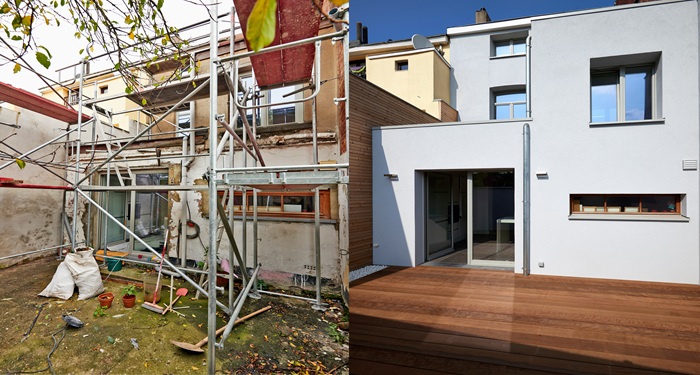
Other factors include ease of access, delivery of windows and doors, the availability of other trades and whether or not building control inspections go smoothly or changes need to be made.
Here's a table showing the average timescales of building works for a straightforward side return extension according to size.
| Size Of Extension | Single Storey | Two-storey |
|---|---|---|
| Small | 6 - 8 Weeks | 10 – 12 Weeks |
| Medium | 10 – 12 Weeks | 14 – 16 Weeks |
| Large | 14 -16 Weeks | 18 – 20 Weeks |
Types of Side Return Extensions
Standard Side Return Extension
A standard side return extension is built at the side of a terraced or semi-detached property with brick and block featuring a flat or pitched roof.
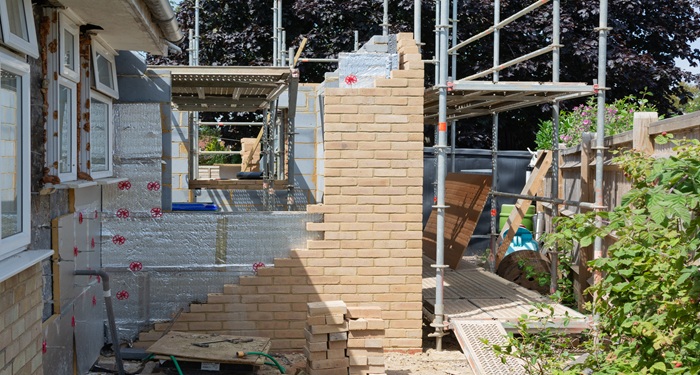
The cost on average for a standard side return extension of between 6m2 and 118m2 is between £7,200 and £37,800.
Typical Uses: Kitchen/Diner, Extra living space, Home office
Pros
- You don’t lose garden space
- Cheaper than other extension options
Cons
- The extra space is limited to the size of the space at the side of your home.
- Not all homes have side access
Wraparound Extensions
A wraparound extension uses space at the side and the rear of your property, so you have the opportunity to create more space.
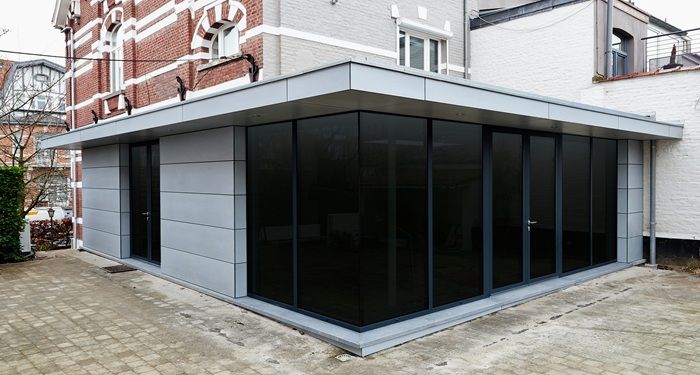
Typical Uses: Bigger kitchen, Utility room, Larger living space, Guest bedroom with en-suite, home office. The average cost of a wraparound extension is between £40,000 and £100,000.
Pros
- A larger amount of space is available
- Design Flexibility
Cons
- More expensive to construct than a side return extension
- Uses garden space
Glass Roof Extensions
If you want to increase the amount of natural light and create a feeling of space in a narrow area, you can have your side return extension built using glass.
The costs for a glass side extension will depend on the size of the extension. On average, the cost per m2 is between £1,750 and £2,000. A 9m2 glass extension will work out at between £15,750 and £18,000.
A 12m2 glass side return extension will cost between £21,000 and £24,000, and a larger glass extension of 18m2 will cost between £31,500 and £36,000.
Typical Uses: Kitchen extension, open plan living.
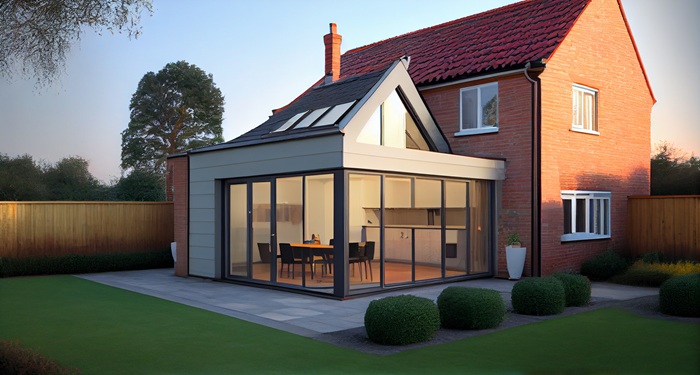
Pros
- Uninterrupted views of your garden
- Plenty of natural light
Cons
- More expensive than a brick structure
- It may be difficult to control the temperature during sunny and cold weather
Two-Storey Side Return Extension
A double-storey will give you the opportunity to create space both upstairs and downstairs without paying double the costs of construction.
The cost of a two-storey side return extension of 18m2 with an average quality finish is between £26,550 and £49,500.
Typical Uses: Kitchen extension, home office, utility room, bedroom with en-suite, teenage den.
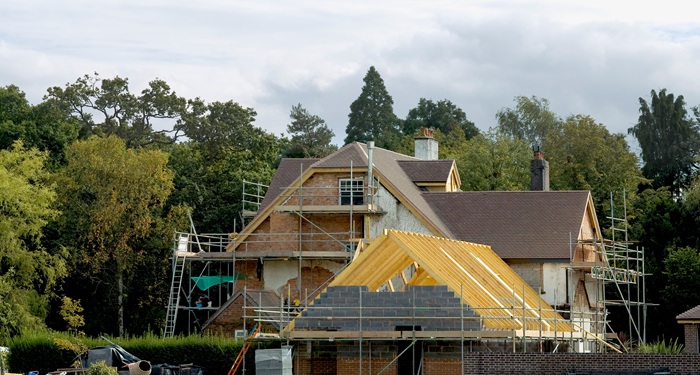
Pros
- Lower per m2 building cost than a single-storey
- Ground and first-floor space
Cons
- Planning permission is usually required
- Increased build duration
Cost of Side Return Extension for Victorian Terraces
Side return extensions are very common on Victorian terraced houses because although they usually have shared walls on both sides, they were often designed with a narrow piece of land down one side, which nowadays is often only used to store bins.
It means it is an ideal space to use for an extension without losing any garden space at the back.
The cost for an extension on a Victorian Terraced House may be slightly more than a semi-detached property because there is often a problem with access. For example, building materials may need to be carried through the house.
The design of a Victorian terraced house must also conform to any period features on the original building and other buildings in the street. You may need a certain type of brickwork or need to install sash windows rather than any other type.

Many Victorian terraced houses are in conservation areas, which means planning permission is necessary. And, finally, because of the proximity of the property to your neighbours, it is likely that you will need to adhere to building control rules about light and party walls.
The cost to build a side return on a Victorian terraced house is likely to be between £1,500 per m2 and £2,500 per m2, depending on the finish.
Roof Type and Cost Impact
Side Return extensions feature either a flat roof, a pitched roof or a glass roof. The roofing style will affect the overall design and the cost.
Flat Roofs
Most flat roofs are constructed from felt and tar, which is spread over a timber frame. It is one of the most cost-effective methods of installing a roof. You should expect to pay between £50 and £60 per m2, with labour costs included.
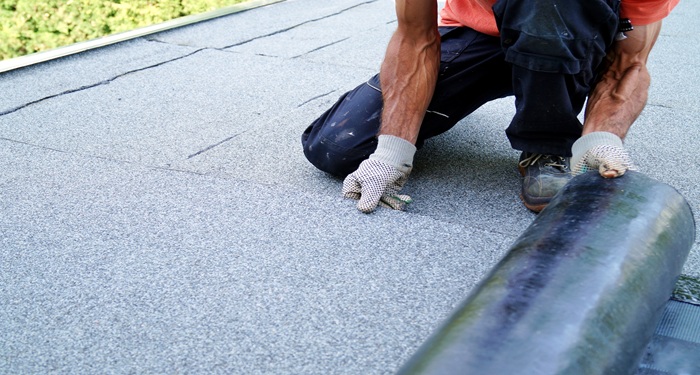
Another material you can use on a flat roof is fibreglass, which will cost between £80 and £205 per m2 with labour.
You can also use EPDM rubber roofing, which will cost between £70 and £90 per m2, including labour.
Pitched Roofs
Pitched roofs are more expensive than flat roofs, and the cost depends on the size and complexity of the work needed. Pitched roofs are usually covered with clay, slate or concrete tiles, and which one you choose will have a bearing on the overall cost.
The price per m2 of slate is between £500 and £1,700. Clay tiles cost between £300 and £600, and concrete tiles cost between £150 and £250 per m2.
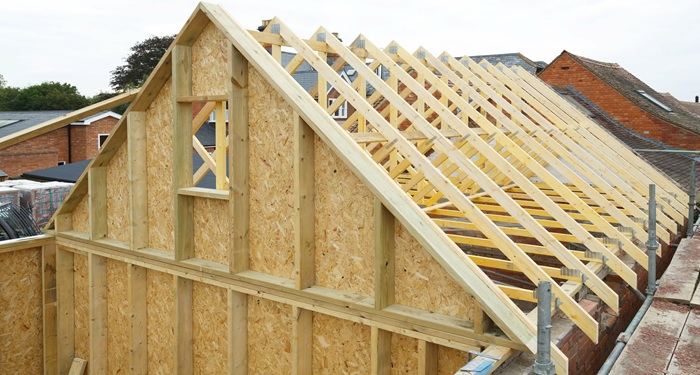
Laying concrete tiles on a 9m2 roof will cost between £1,350 and £2,250, whereas slate for a 9m2 roof will cost between £4,500 and £15,300. The costs will be higher in London and the South East of England.
Glass Roofs
Side return extensions can also be built using glass roofs to make the most of natural light. The average cost to install a glass roof is between £1,750 and £2,000 per m2.
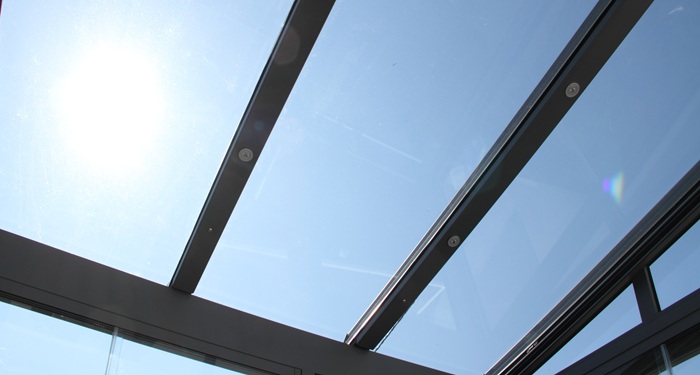
If you were to install a glass roof on a 12m2 extension, it would cost between £21,000 and £24,000.
How Much Does It Cost to Remove a Side Return Extension?
The removal of an old side return extension is best done by a general builder.
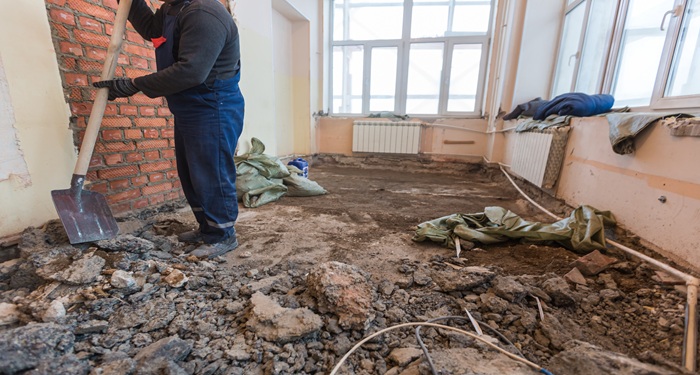
The work will likely take a few weeks, and the average cost of removal will be around £3,000, which includes skip hire at around £200 a week and labour.
FAQs
Q: Do I need planning permission for a side return extension?
A: Most side return extensions will come under permitted development. But if you want to build two storeys or you live in a conservation area, then you will need planning permission.
The exception to the two-storey rule is if you own a semi-detached property that was built after 1948. But it is still recommended that you visit your local planning department before you start any major building projects.
Q: How long does the build usually take?
A: The duration of the build depends on the size of the extension, whether or not it is single or two storeys and if access is straightforward and weather conditions are favourable. The average time is between 12 and 14 weeks.
Q: Can I live in my home during the construction?
A: Yes, it is possible to live at home. But there will be disruptions like noise, dust and temporary loss of utilities at times. If you can live with the discomfort, then staying at home is a possibility.
Q: Will a side return extension add value to my home?
A: Yes. A well-built extension will add value to your home. For example, adding a double bedroom can add 14% to a 2-bedroomed home, and an additional bathroom can add 6%. On average, adding an extra room to a terraced house will increase its value by between 10% and 13%.
Q: What’s the difference between a side return and a rear extension?
A: A side return extension only uses the space at the side of your property, which more often than not, doesn’t get used. A rear extension uses the garden at the back of your property, so you do lose some garden space with this type of extension.
Rear extensions are normally larger than side return extensions. Typical sizes are between 15m2 and 50m2 with a per m2 cost of between £1,500 and £2,500.

